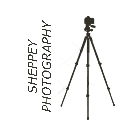Photography: Subjectivity and Opinion
16 November 2020
In the past, I have been somewhat unflattering about Martin Parr and Peter Dench, basing my criticism on them using subjectivity to express an opinion. But is there anything necessarily wrong with this?
Photography has traditionally been thought of as an inherently truthful medium. This is what has given it value as a reporting tool; when the FSA photographers sent back their pictures of poverty and deprivation, no-one questioned them, they were photographs after all. Same with the typologies of August Sander and the Bechers and the war pictures of Fenton and Brady. When Francis Frith sent back pictures from Egypt they showed the pyramids to their British viewers as they truly were. From these roots grew Documentary photography and the value as documents derived from their perceived veracity.
Yet with the demise of publications like Picture Post and the rise of the smartphone equipped citizen photographer, Documentary photography, as practised by “serious” photographers no longer had an outlet. As a result they turned to the gallery and the photobook. It could be argued that Documentary photography was dead and that we should have invented a new term, but that is not the direction I want to take here.
Instead I will start from a different viewpoint; photography is inherently subjective. Lech Lechowicz’ essay “Objectivity and Subjectivity in Photography - a Few Theoretic and Historic Remarks” argues that subjectivity and objectivity oscillate through time like the swinging of a pendulum. This misses the point that photography, despite its apparent veracity, is inevitably subjective. Confront two photographers with the same scene and you will get two different interpretations.
A photograph’s perceived veracity is purely relative. When taking a photograph, a photographer makes a series of choices, starting with the obvious one of deciding that something is worth photographing. Then comes what to include and exclude, how to make the exposure – dark or light, depth of field, decisions about captioning and text, sequencing with other photos, size, etc, etc. As John Berger said, “We must remember that the images we see in photographs and other photographic media do not mirror reality but reflect someone’s view of reality.” Jorg Colberg agrees, “the many steps that lie between the pressing of the shutter’s button and the display of the resulting image (in whatever form) make the connection between reality and picture very, very difficult.”
Given that subjectivity is inevitable, when a photographer sets out with an intent, it is equally inevitable that he will end up expressing an opinion. Jorg Colberg again, “(photographers) state facts (or at least look like they do). Given the way the medium works, given all the choices and decisions that go into the making of each and every image, photographs are first and foremost opinions.”
What are we, the viewers, to make of all these images that are masquerading as factual documents but which are really just the opinion of some photographer? There are two sides to the answer to that question.
Firstly, the photographer has a responsibility. Realising he is expressing his opinion, he should stay true to his intention and not water it down with what he expects his audience wants to see. Jorg Colberg expresses it bluntly: “An artist (a photographer, painter, writer, …) has to take care of what s/he considers to be her/his own responsibility, and if that offends the people in Congo, Appalachia, or wherever else then so be it.” There is, of course, a lot more to it than that, a responsible photographer will be sensitive to the feelings of the people in the Congo, Appalachia etc. And he has to be honest about his opinion and beware of presenting them as factual.
Secondly is the responsibility of the viewer. There is still the oft held view that the camera never lies. We need to be aware that this is not necessarily so. This does not mean we should be cynical about them, rather approach them with a questioning curiosity. Photographs are ambiguous, their meaning depends not only on the photographer’s intent and the opinion he is expressing therein, but also on the context in which they are shown and the cultural reference the viewer brings.
Still within the context of Documentary photography and photojournalism, the “opinion” of a sensitive, well-intentioned photographer can produce some powerful and lasting images. So I’ll leave the last word to another Jorg Colberg quote: “…photographs actually…challenge their viewers. The reality is that many photographers decide not to do that, to instead produce photographs that confirm expectations. Such work has very little, if any, artistic merit.”


